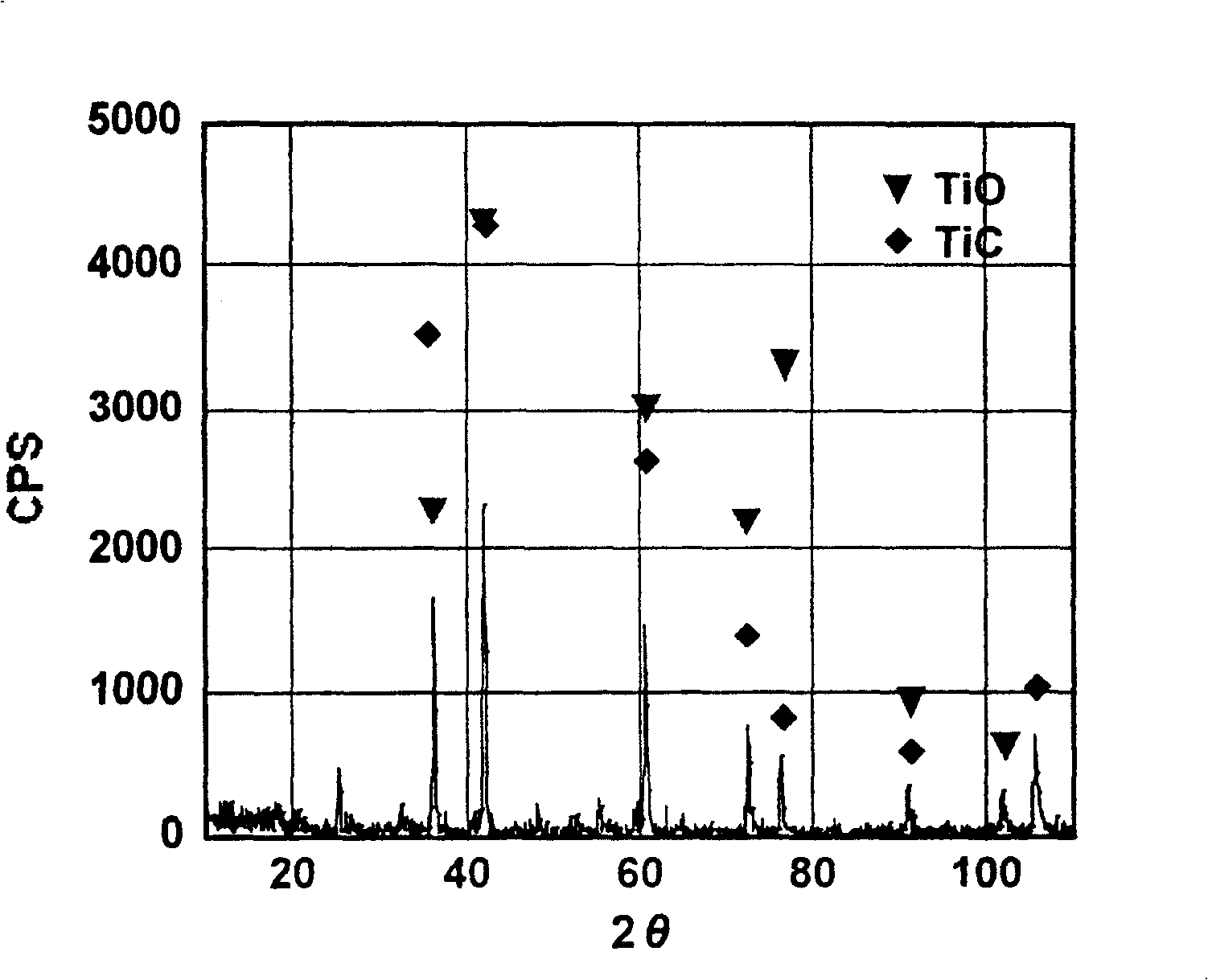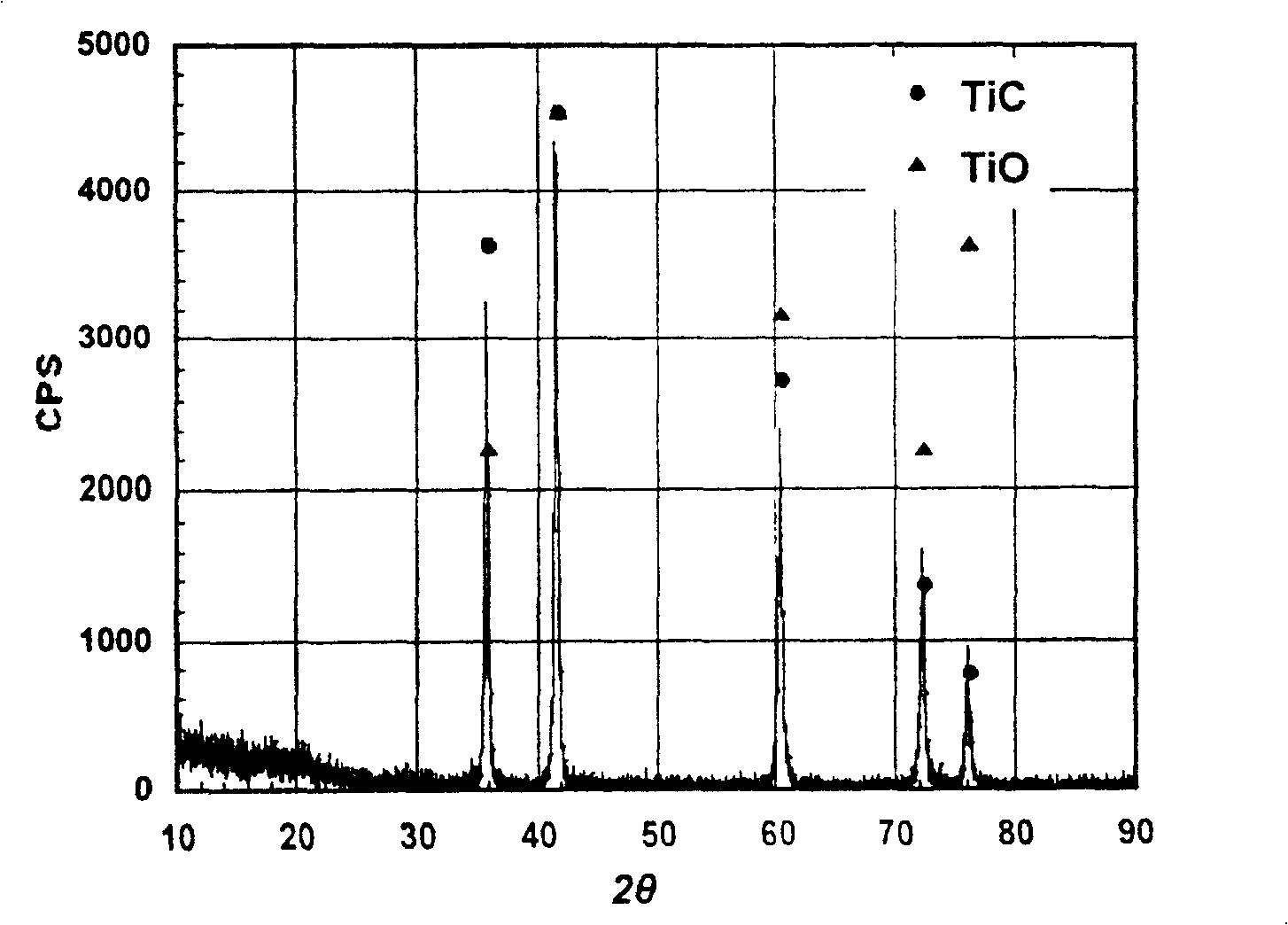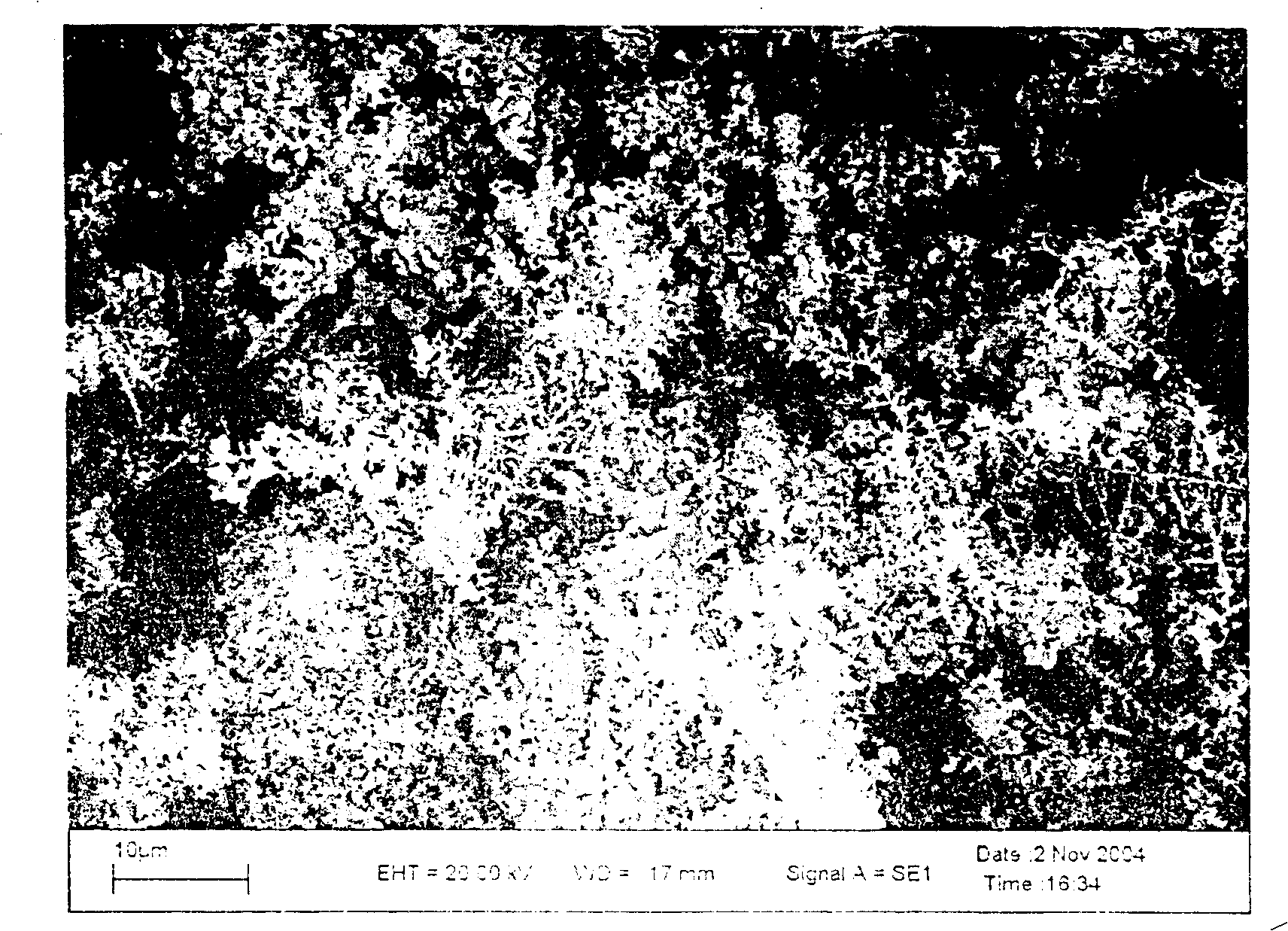Pure titanium production method from titanium monoxide/titanium carbide soluble solid anode electrolysis
An anode electrolysis and titanium monoxide technology, which is applied in the field of titanium monoxide/titanium carbide soluble solid solution anode electrolysis to produce pure titanium, can solve the problems of dependence, high anode sludge, and it is difficult to achieve stable electrolysis.
- Summary
- Abstract
- Description
- Claims
- Application Information
AI Technical Summary
Problems solved by technology
Method used
Image
Examples
Embodiment 1
[0058] Anode preparation
[0059] Raw materials: carbon powder, titanium dioxide are mixed in the following reaction stoichiometric ratio.
[0060] 2TiO 2 +4C=Ti 2 CO+3CO
[0061] Preparation process conditions (see the table below)
[0062]
[0063] The electrical resistance of the pressed block was 38 ohm·cm before heat treatment, and the resistance dropped sharply to 0.1 ohm·cm after heat treatment. The elemental analysis of the material after heat treatment shows that its atomic ratio should be Ti 2 CO, the structural composition of the material was analyzed by means of X-ray diffraction, and the results are shown in the attached figure 1 , it can be seen from the figure that the structure of the material changes significantly after heat treatment, mainly TiC·TiO solid solution with metal conductivity.
Embodiment 2
[0065] Anode preparation
[0066] Raw materials: Titanium carbide, titanium dioxide powder mixed in the following reaction stoichiometric ratio.
[0067] 2TiO 2 +4TiC=3Ti 2 CO+CO
[0068] Preparation process conditions (see the table below)
[0069]
[0070]
[0071] The resistance of the pressed block was 72 ohm·cm before heat treatment, and the resistance dropped sharply to 0.05 ohm·cm after heat treatment. The structural components of the material were analyzed by means of X-ray diffraction, and the results are shown in the appendix figure 2 , it can be seen from the figure that it is TiC·TiO solid solution after heat treatment.
Embodiment 3
[0073] The bulk material obtained in Example 1 is used as the anode, the carbon steel is used as the cathode, and the NaCl-KCl molten salt is used as the electrolyte for electrolysis. The specific implementation process is shown in the table below:
[0074]
[0075] In order to illustrate the mechanism of the anode reaction, a gas chromatographic analysis instrument is used to detect the gas generated in the anode process during the electrolysis process. The carrier gas used is argon, and the concentrations of various gases are shown in the table below.
[0076]
[0077] The data in the above table shows that carbon oxide gas is generated at the anode during the electrolysis process, and CO is the main form under the experimental conditions. After the electrolysis is completed, the cathodic deposition obtains pure titanium, which is washed with dilute hydrochloric acid (1wt%) and then washed with deionized water for 5 times and stored in natural drying. The cathode curren...
PUM
| Property | Measurement | Unit |
|---|---|---|
| current efficiency | aaaaa | aaaaa |
| current efficiency | aaaaa | aaaaa |
Abstract
Description
Claims
Application Information
 Login to View More
Login to View More - R&D
- Intellectual Property
- Life Sciences
- Materials
- Tech Scout
- Unparalleled Data Quality
- Higher Quality Content
- 60% Fewer Hallucinations
Browse by: Latest US Patents, China's latest patents, Technical Efficacy Thesaurus, Application Domain, Technology Topic, Popular Technical Reports.
© 2025 PatSnap. All rights reserved.Legal|Privacy policy|Modern Slavery Act Transparency Statement|Sitemap|About US| Contact US: help@patsnap.com



